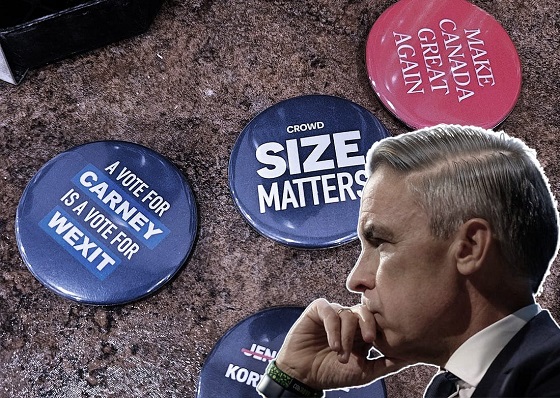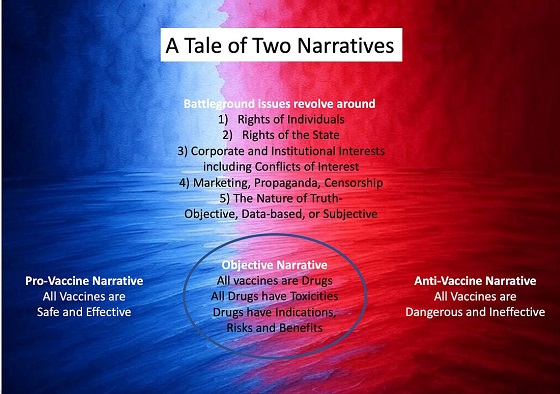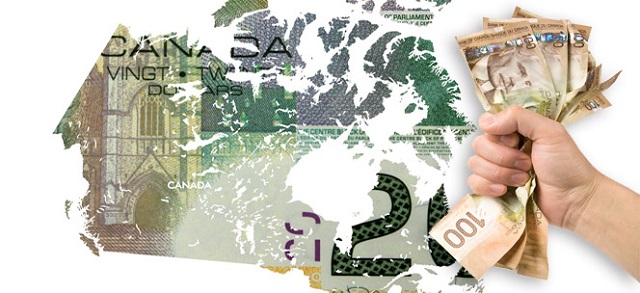Entertainment
Laughter Returns to Red Deer

For the better part of the last two years, laughter has been hard to come by. Live entertainment came to an abrupt halt, with no certainty of when it would return.
The wait is finally over.
Not only are Central Alberta’s venues reopening, they are bringing back live shows to the area. The Velvet Olive is once again bustling with live music many nights of the week. Bo’s Bar and Grill is bringing huge acts back to the city. It’s not just the music we missed though. Comedy is coming back in a big way.
Pre-pandemic, the longtime hub for comedy in Red Deer was the Heritage Lanes Lounge. Running for almost a decade, the room saw many of Canada’s finest and funniest bring hilarity to town each and every Sunday. Now, for the first time since 2019, weekly stand up is back at The Lanes.
“Heritage Lanes is excited to be back hosting weekly ‘Splits and Giggles’ comedy”, said Shelby Chrest, owner. “As the city’s longest lasting comedy venue we feel it’s important for our community to gather and socialize while supporting local.”
“Splits and Giggles” launches Sunday, August 8th at 8PM at Heritage Lanes. Kicking off the first show is nationally renowned headliners Kathleen McGee and Sean Lecomber.
The Lanes won’t be your only source of funny in the area, as many other shows are new or returning. The Radisson Hotel will be back to hosting monthly events beginning August 6th with Adam Ruby, and The Velvet Olive’s “Fake Comedy Show” returns August 13th. When asked for comment, “Fake Show” producer Zachary Landry said “I’ll get back to you in an hour.” One hour later, “I was eating blueberries.”
You’ll also find monthly mirth at Red Hart Brewing and The Spot. And just outside the city, Sylvan Lake is in on the action, hosting Lisa Baker August 6th at Fireside Restaurant, and Longshot Comedy featuring Marc Anthony Sinagoga on September 10th at Lodge 43, as well as September 11th at The Fox & Hound in Innisfail.
With the support of venues like these, local comedians are thrilled to once again have places to hone their art. “During these lockdowns and restrictions, I realized how important laughter and friendship is to all of us”, said Niek Theelen, local artist. “After months of shutdowns, it’s invigorating to see Red Deer comedians come back with renewed energy and passion to make Central Alberta laugh again.” Niek, like many others, had to pivot when stand up evaporated, so he began work on a documentary to be released next year through Telus Optik TV. “Love of the Game” will shine a light on disabled athletes and how they rise past their challenges to play the sports they love.
No matter how they filled the time though, nothing feels sweeter to a comedian than the stage and a hot crowd.
Shelby Chrest sums it up: “Laughter is contagious, we want to put smiles on faces and that’s worth sharing!”
Business
California planning to double film tax credits amid industry decline

From The Center Square
By
California legislators have unveiled a bill to follow through with the governor’s plan of more than doubling the state’s film and TV production tax credits to $750 million.
The state’s own analysis warns it’s likely the refundable production credits generate only 20 to 50 cents of state revenue for every dollar the state spends, and the increase could stoke a “race to the bottom” among the 38 states that now have such programs.
Industry insiders say the state’s high production costs are to blame for much of the exodus, and experts say the cost of housing is responsible for a significant share of the higher costs.
The bill creates a special carve-out for shooting in Los Angeles, where productions would be able to claim refundable credits for 35% of the cost of production.
California Gov. Gavin Newsom announced his proposal last year and highlighted his goal of expanding the program at an industry event last week.
“California is the entertainment capital of the world – and we’re committed to ensuring we stay that way,” said Newsom. “Fashion and film go hand in hand, helping to express characters, capture eras in time and reflect cultural movements.”
With most states now offering production credits, economic analysis suggests these programs now produce state revenue well below the cost of the credits themselves.
“A recent study from the Los Angeles County Economic Development Corporation found that each $1 of Program 2.0 credit results in $1.07 in new state and local government revenue. This finding, however, is significantly overstated due to the study’s use of implausible assumptions,” wrote the state’s analysts in a 2023 report. “Most importantly, the study assumes that no productions receiving tax credits would have filmed here in the absence of the credit.”
“This is out of line with economic research discussed above which suggests tax credits influence location decisions of only a portion of recipients,” continued the state analysis. “Two studies that better reflect this research finding suggest that each $1 of film credit results in $0.20 to $0.50 of state revenues.”
“Parks and Recreation” stars Rob Lowe and Adam Scott recently shared on Lowe’s podcast how costs are so high their show likely would have been shot in Europe instead.
“It’s cheaper to bring 100 American people to Ireland than to walk across the lot at Fox past the sound stages and do it and do it there,” said Lowe.
“Do you think if we shot ‘Parks’ right now, we would be in Budapest?” asked Scott, who now stars in “Severance.”
“100%,” replied Lowe. “All those other places are offering 40% — forty percent — and then on top of that there’s other stuff that they do, and then that’s not even talking about the union stuff. That’s just tax economics of it all.”
“It’s criminal what California and LA have let happen. It’s criminal,” continued Lowe. “Everybody should be fired.”
According to the Public Policy Institute of California, housing is the single largest expense for California households.
“Across the income spectrum, 35–44% of household expenditures go to covering rent, mortgages, utilities and home maintenance,” wrote PPIC.
The cost of housing due to supply constraints now makes it nearly impossible for creatives to get their start in LA, said M. Nolan Gray, legislative director at housing regulatory reform organization California YIMBY.
“Hollywood depends on Los Angeles being the place where anybody can show up, take a big risk, and pursue their dreams, and that only works if you have a lot of affordable apartments,” said Gray to The Center Square. “We’ve built a Los Angeles where you have to be fabulously wealthy to have stable and decent housing, and as a result a lot of folks either are not coming, or those who are coming need to paid quite a bit higher to make it worth it, and it’s destroying one of California’s most important industries.”
“Anybody who arrived in Hollywood before the 2010s, their story is always, ‘Yeah, I showed up in LA, and I lived in a really, really dirt-cheap apartment with like $10 in my pocket.’ That just doesn’t exist anymore,” continued Gray. “Does the Walt Disney of 2025 not take the train from Kansas City to LA? Almost certainly not. If he goes anywhere, he goes to Atlanta.”
Business
Disney cancels series four years into development, as it moves away from DEI agenda

 MxM News
MxM News
Quick Hit:
Disney’s decision to cancel its planned ‘Tiana’ streaming series follows the entertainment giant’s move away from diversity, equity, and inclusion (DEI) policies. The company, once deeply committed to political activism, is now struggling to recover from years of financially disastrous content choices.
Key Details:
-
Disney announced the end of DEI-based management decisions and the winding down of its “Reimagining Tomorrow” initiative earlier this year.
-
The Hollywood Reporter revealed that the cancellation of ‘Tiana’ was part of Disney’s broader retreat from “original longform content for streaming.”
-
Analyst Ian Miller notes that Disney’s prior focus on political messaging rather than quality content led to repeated box office failures.
Diving Deeper:
Disney has spent the past several years prioritizing political activism over storytelling, leading to a sharp decline in the company’s financial performance and audience engagement. According to Ian Miller of OutKick, “Disney assumed that any content that represented ‘diverse’ audiences or featured ‘diverse’ characters would be successful.” That assumption, he argues, proved costly.
The decision to cancel ‘Tiana’ comes at a time when Disney is reeling from multiple box office disappointments, including the expected failure of ‘Snow White’ and the ongoing struggles of both Marvel and Lucasfilm properties. Miller highlights the alarming trend, stating, “Marvel’s ‘Captain America: Brave New World’ may actually lose money, with a disastrous $342 million worldwide gross through the first three and a half weeks.”
The ‘Tiana’ series was first announced in December 2020, a time when Disney was fully embracing its progressive agenda. The Hollywood Reporter noted that the show struggled to find its creative direction despite being in development for over four years. Miller suggests that, in the past, Disney would have continued with such a project regardless of its quality, out of fear of backlash from the left. “Under its prior operating mandate, Disney would have pushed forward anyway, believing that canceling a show based on a black character would be unacceptable to left-wing critics,” Miller writes.
However, the company’s recent shift suggests an overdue recognition that audiences ultimately demand quality over ideology. As Miller points out, “Parents want to take their kids to the movies, or give them family-friendly content to watch at home when they need a distraction. For decades, that meant Disney. Until the company prioritized targeting demographics instead of quality.”
While Disney appears to be learning from its missteps, the road to recovery will be long. As Miller emphasizes, the key to regaining audience trust isn’t to abandon diverse characters but to “get it right instead of doing it to check a box.”
-

 2025 Federal Election2 days ago
2025 Federal Election2 days agoCSIS Warned Beijing Would Brand Conservatives as Trumpian. Now Carney’s Campaign Is Doing It.
-

 2025 Federal Election2 days ago
2025 Federal Election2 days agoInside Buttongate: How the Liberal Swamp Tried to Smear the Conservative Movement — and Got Exposed
-

 Bruce Dowbiggin1 day ago
Bruce Dowbiggin1 day agoIs HNIC Ready For The Winnipeg Jets To Be Canada’s Heroes?
-

 Dr. Robert Malone2 days ago
Dr. Robert Malone2 days agoThe West Texas Measles Outbreak as a Societal and Political Mirror
-

 COVID-191 day ago
COVID-191 day agoCOVID virus, vaccines are driving explosion in cancer, billionaire scientist tells Tucker Carlson
-

 Health1 day ago
Health1 day agoHorrific and Deadly Effects of Antidepressants
-

 illegal immigration1 day ago
illegal immigration1 day agoDespite court rulings, the Trump Administration shows no interest in helping Abrego Garcia return to the U.S.
-

 International2 days ago
International2 days agoTulsi Gabbard tells Trump she has ‘evidence’ voting machines are ‘vulnerable to hackers’






